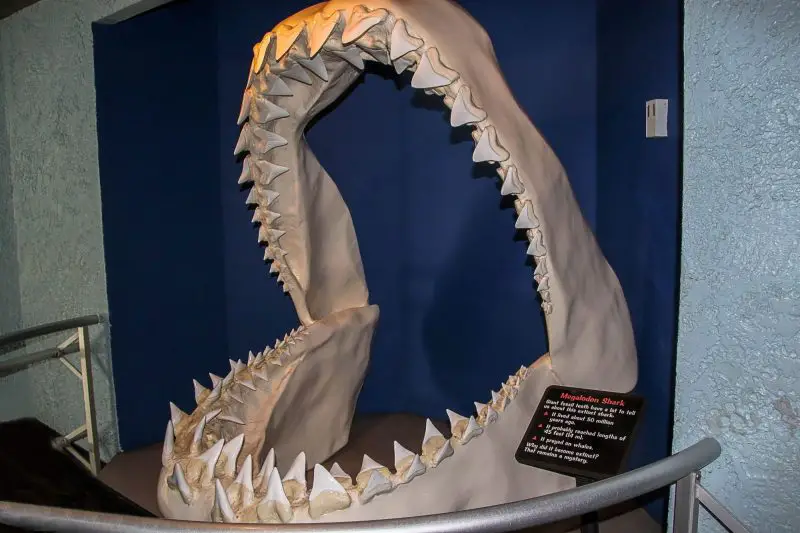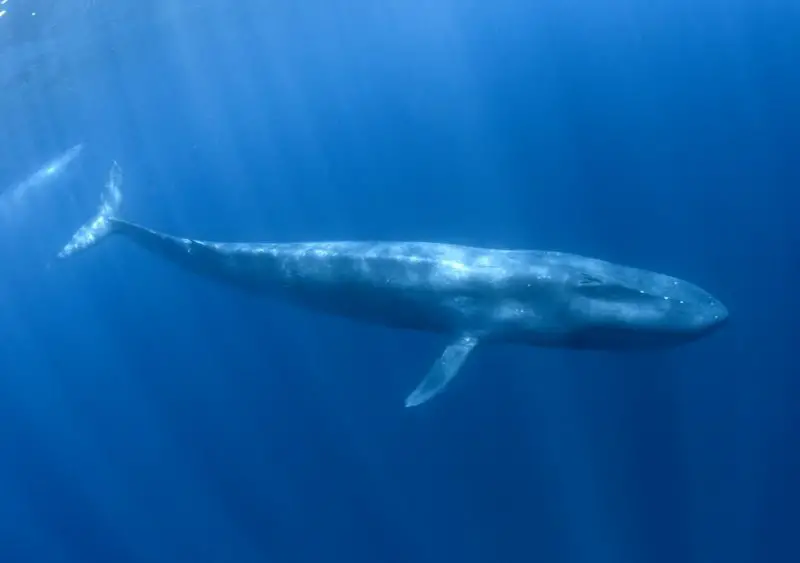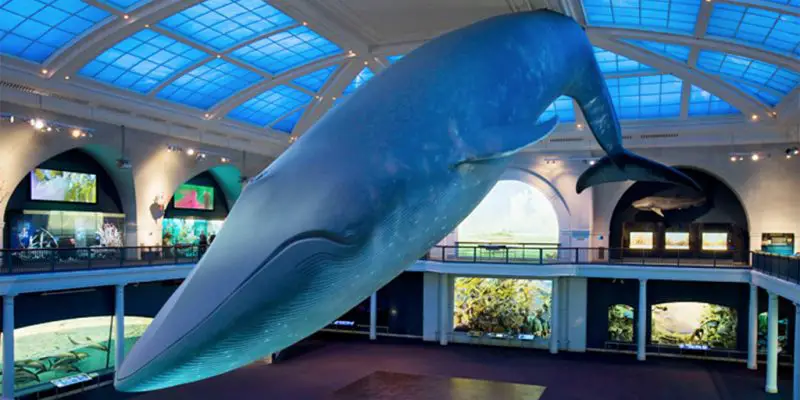How would the largest shark that ever lived compare with the largest mammal known to have lived on earth? You read that right! If the famed Megalodon still existed today, how would it fare with the Blue Whale?
Read more to find out about these largest sea creatures.
Megalodons
Megalodons are apex predators. This means they were built to be at the top of a food chain, without predators. Instead, they themselves are the predators.
Interest in the extinct Megalodon has been revived lately when a British 6-year-old boy, Sammy Shelton, found a 4-inch (10 cm.)- long Megalodon tooth in Bawdsey Beach in Suffolk, UK during a bank holiday break in May. It has been confirmed by an expert. Prof. Ben Garrod.
Otodus megalodon — previously known as Carcharodon or carcharocles megalodon — dates back 20 million years. In the succeeding 13 million years, it dominated the ancient oceans until it went extinct 3.6 million years ago.
Not only is the Megalodon the biggest shark in the world, but it’s also one of the largest fish to have ever existed. Scientists estimate that it grew to 49 feet to 59 feet (15 meters to 18 meters) in length– triple the length of the largest recorded great white shark.
O. megalodon is adapted to warm tropical and subtropical regions. They have been so widely spread around the globe that Megalodon teeth have been found on all continents except Antarctica.

Some interesting facts about the Megalodon:
- Its jaws are so huge that if it opens them wide enough, it could swallow 2 adults standing side by side.
- Its bite can crush a car.
- Its bite force is 3x stronger than a T. Rex’s.
- The largest Megalodon tooth ever discovered was about the length of a TV remote (see also ‘55 Inch TV Dimensions‘) which averages 7 to 8 inches long
Why Did Megalodons Go Extinct?
The extinction of the Megalodon around 3.6 million years ago coincides with the rise of the great white shark, so scientists theorize that the smaller but nimbler great white shark had something to do with it.
This happened towards the end of the Pliocene epoch when the global climate cooled prior to the Ice Age (Pleistocene era). The cooling oceans likely diminished the areas where Megalodons–which were warm-water sharks– could survive.
During that time, the Megalodon had to deal with the shrinking populations of the small whales they ate. They also broke up into smaller populations. This spelled doom for them with the appearance of the great white sharks, who also ate the same prey, fueling intense competition.
Then, there were also now-extinct killer sperm whales which grew as large as Megalodons and had bigger teeth. The killer sperm whales were also warm-blooded so living in cold waters wasn’t a problem for them.
This gave them expanded territory, hunting in the Megalodons’ waters, which intensified the competition for dwindling prey. Killer sperm whales also hunted in groups, compared to the Megalodon which hunted alone.
It was a triple blow to the Megalodon — cooling seas, intense competition, and dwindling prey. Its time was up.

Blue Whales
Blue whales have very big hearts, which can weigh as much as a mid-sized car. You can hear their hearts beat from as far as 2 miles away.
Blue whales, or Balaenoptera musculus, are the largest mammals in the world, growing up to 100 feet (30.48 meters) long and more than 200 tons (200,000 kg.) heavy. This is the equivalent of two and a half buses in length and 10 of the heaviest buses together in weight. Antarctic blue whales are the largest.
Blue whales live an average of up to 90 years, with some reaching 110 years, but they are an endangered species now. They were hunted almost up to extinction until they were protected starting in 1986 when the International Whaling Commission (IWC) banned commercial whaling.
Their population has been growing since then, but they are still officially categorized as endangered since their population has not grown back to pre-whaling days when they were around 240,000 globally. Today, they are estimated to only be around 3% to 11% (7,200 to 26,400) of the pre-1911 population size.
They have long, slender bodies. Their speckled blue-gray color looks light blue underwater, so this is why they are called “blue whales”.
They breed once every 3 years, and blue whale pregnancy lasts 11 to 12 months. A newborn blue whale is anything but a baby in size — it can weigh as much as 2.98 tons (2,980 kgs.) and grow to 26 feet (7.9 meters) in length.
A blue whale calf has a voracious appetite. As its mother suckles it in the water, it can consume over 158 gallons (600 liters) of mother’s milk every day during its first year. So, it also grows fast, gaining around 90 kgs. of weight per day in its first year.
Blue whale females are nurturing. Once one has given birth, she will lift her newborn up to the surface of the water so it can take its first breath. Other nearby female blue whales will help by nudging the newborn up to help it break the water’s surface and breathe.
Blue whales have a blowhole to breathe, similar to our noses. When they exhale, a cloud of pressurized air is sent as much as 30 feet (9 meters) up in the air. They tend to come up for air about every 5 to 15 minutes but they can go longer holding their breath in.
They feed exclusively on tiny, shrimplike animals called krill. At certain times of the year, a single adult blue whale can consume 4 tons of krill in a day. Their tongues can weigh as much as an elephant weighs.

Blue whales generally swim alone or in pairs, but they apparently attach to another living being that spends time with them. This is shown by how blue whales washed ashore and taken care of by humans who send them back to sea return the favor by rescuing these particular humans when they themselves are endangered in the ocean as if to say “thank you”.
Aside from having feelings and showing affection, blue whales have very big hearts, which can weigh as much as a mid-sized car. You can hear their hearts beat from as far as 2 miles away.
Due to their huge size, blue whales rarely have natural predators, except for large packs of orcas or killer whales which prey on juvenile blue whales.
Blue whales, along with other whales, do have intentional predators, though — humans. Even with the IWC ban on commercial whaling, 31, 984 whales have been killed. Iceland and Norway officially objected to the IWC moratorium. Japan and Iceland continue to hunt whales in the name of “scientific whaling”.
Whales are hunted for their meat and body parts. Their oil, blubber, and cartilage are used in pharmaceuticals and health supplements. Their meat is used for pet food, or even served to tourists as a “traditional dish.”
Megalodon vs. Blue Whale: Size Comparison
| Characteristic | Megalodon | Blue Whale |
|---|---|---|
| Size | Grew to 82 feet (25 meters) | Average length of 90 feet (27 meters) |
| Weight | Averaged around 50 tons | Range of 110 to 200 tons |
| Predatory Behavior | Apex predator with powerful offensive capabilities | Peaceful filter-feeder |
| Feeding Behavior | Biting and swallowing behavior | Skim feeding and lunge feeding techniques |
| Diet | Mid-sized whales (during its existence) | Primarily feeds on tiny krill |
| Extinction | Went extinct 3.6 million years ago | Endangered due to historical whaling practices |
| Threats | N/A | Commercial whaling, ship strikes, pollution, etc. |
Is a Megalodon bigger than a blue whale? No.
Scientists estimate that even the largest Megalodon grew only to 82 feet (25 meters), while an average blue whale grows to 90 feet (27 meters) and the largest blue whale grows to 100 feet (30 meters).
Megalodon vs. Blue Whale: Weight Comparison
Blue whales are heavier than Megalodons, too. On average, blue whales weigh between 110 to 200 tons. Scientists estimate that Megalodons averaged only 50 tons, even if they were bigger than whale sharks and several other shark species.
Megalodon vs. Blue Whale: Who Wins In A Fight?
Despite the blue whale overpowering the Megalodon in size and weight, if the Megalodons still existed today and they would fight with Blue Whales, the Megalodons would still probably win. Why?
The Megalodons are apex predators. This means they were built to be at the top of a food chain, without predators. Instead, they themselves are the predators. Megalodons have naturally predatory behavior, moving stealthily and ambushing prey.
Megalodons’ offensive capabilities include jaws that exceed 6.5 feet in diameter, with 250 teeth of around 7 inches long each (How Big Is 7 Inches?). They are also believed to have senses similar to the great white shark, which involves a powerful sense of smell, picking up the scent of prey in the water with ease.
Megalodons are estimated to have a biting power of 108,000 to 180,000 Newtons. Megalodons’ swim speed, though, is 3.1 mph (5 kph), slower than a blue whale’s.
Although a blue whale has a larger mouth at 20 feet, it does not have true teeth and it has a small throat of only 4 to 8 inches. Blue whales use baleen filters to sift through their prey. Its feeding behavior is only skim feeding or lunge feeding, compared to the Megalodon’s biting and swallowing behavior.
Skim feeding involves locating a cluster of zooplankton prey and swimming through it with the mouth open. Lunge feeding is using high-speed horizontal or vertical propulsion to consume large amounts of prey and water while removing the water through closed-mouth filtration.
When a blue whale is on the offensive, its behavior mainly consists of tail thrashing. Blue whales have a biting power of around 182,000 Newtons, but they rarely use their bites for feeding. Blue whales’ swim speed is 5 mph (8 kph).
Blue whales are peaceful, filter-feeding omnivores that largely feed on the tiny krill. Megalodons are carnivores. When the Megalodon still lived in the oceans, it fed on mid-sized whales, since no whales the size of the blue whale still existed then.
Although the blue whale has the advantage over the Megalodon in terms of physical features like size and weight and even swim speed, the Megalodon has the superior advantage over the blue whale in terms of natural predatory instincts and feeding behavior.
So, a Megalodon would win.
FAQ
Scientists estimate that the largest Megalodon grew to 82 feet (25 meters), while an average blue whale grows to 90 feet (27 meters) and the largest blue whale grows to 100 feet (30 meters).
Blue whales are heavier than Megalodons, with an average weight ranging from 110 to 200 tons, while Megalodons averaged only 50 tons.
Despite the Blue Whale being larger and heavier, the Megalodon would likely win. Megalodons were apex predators with powerful offensive capabilities, including large jaws, sharp teeth, and a strong sense of smell. Their natural predatory instincts and feeding behavior give them an advantage over the Blue Whale.
Megalodons went extinct around 3.6 million years ago. Scientists theorize that the rise of the great white shark, competition for prey, and cooling oceans, which reduced their suitable habitats, contributed to their extinction.
- What Size is Regular Printer Paper? Quick Guide for Paper Dimensions - June 18, 2023
- What Size is My Monitor: A Comprehensive Guide - June 18, 2023
- How Big is Italy Compared to the US? A Concise Comparison - June 16, 2023

